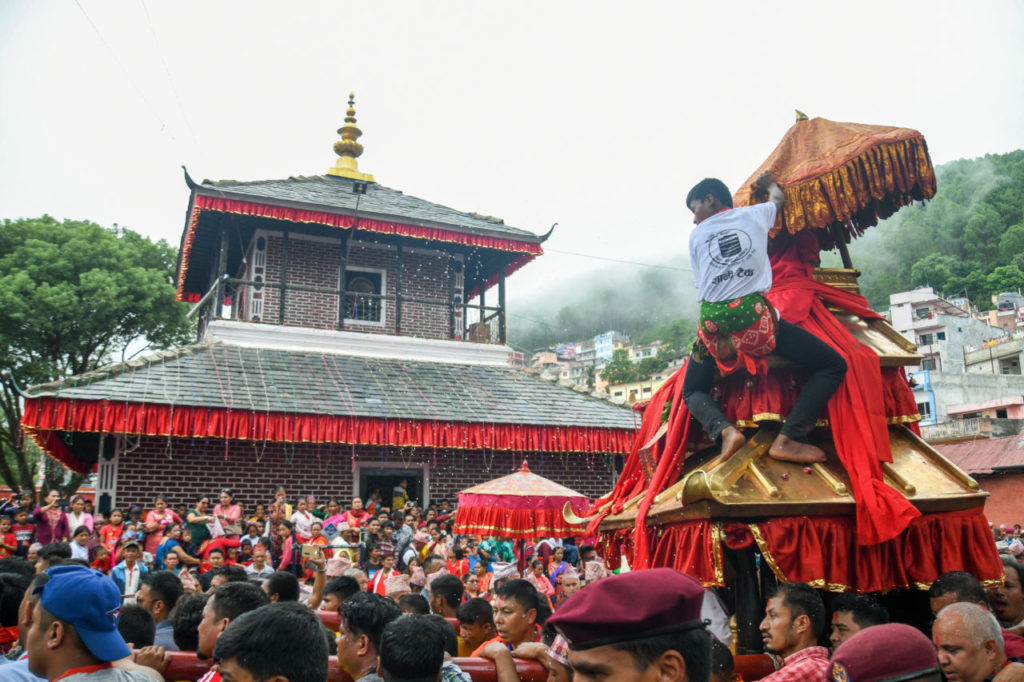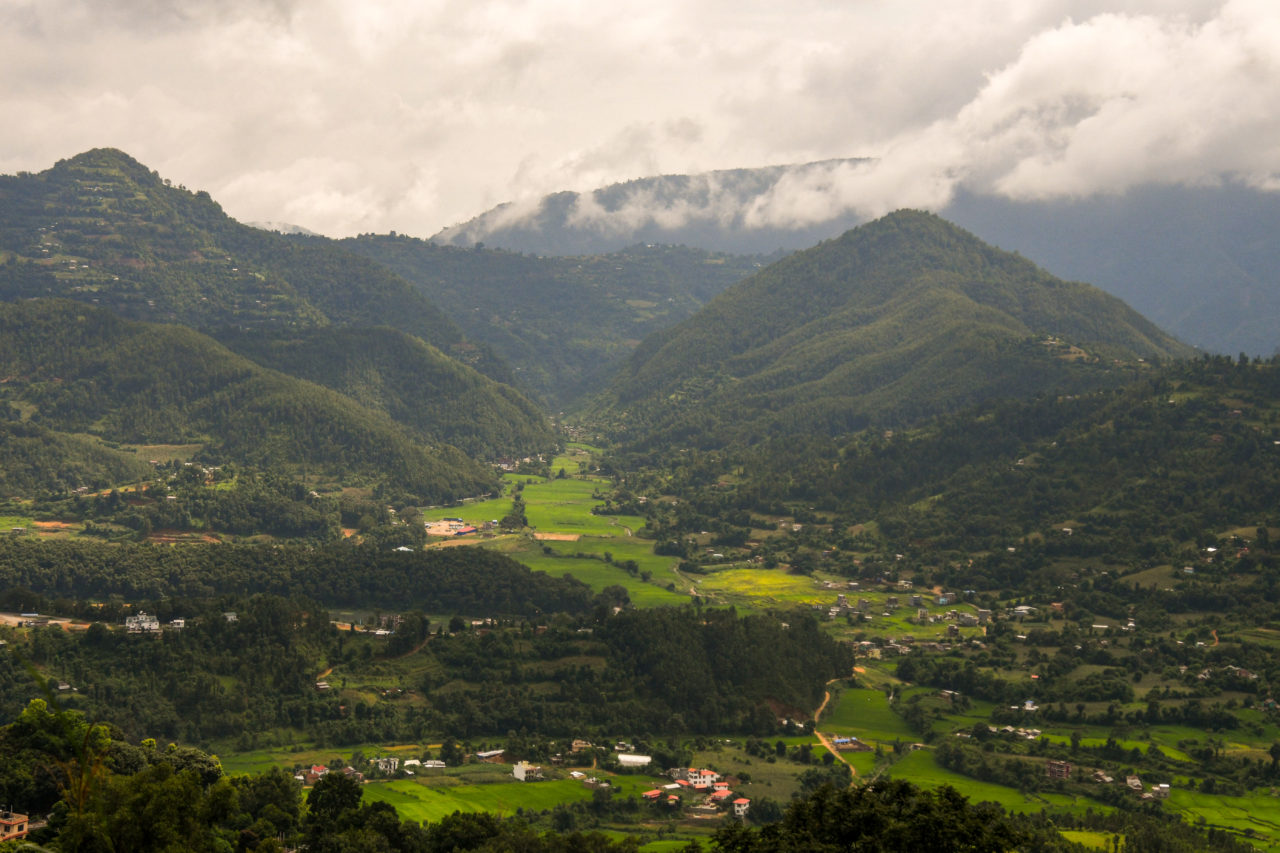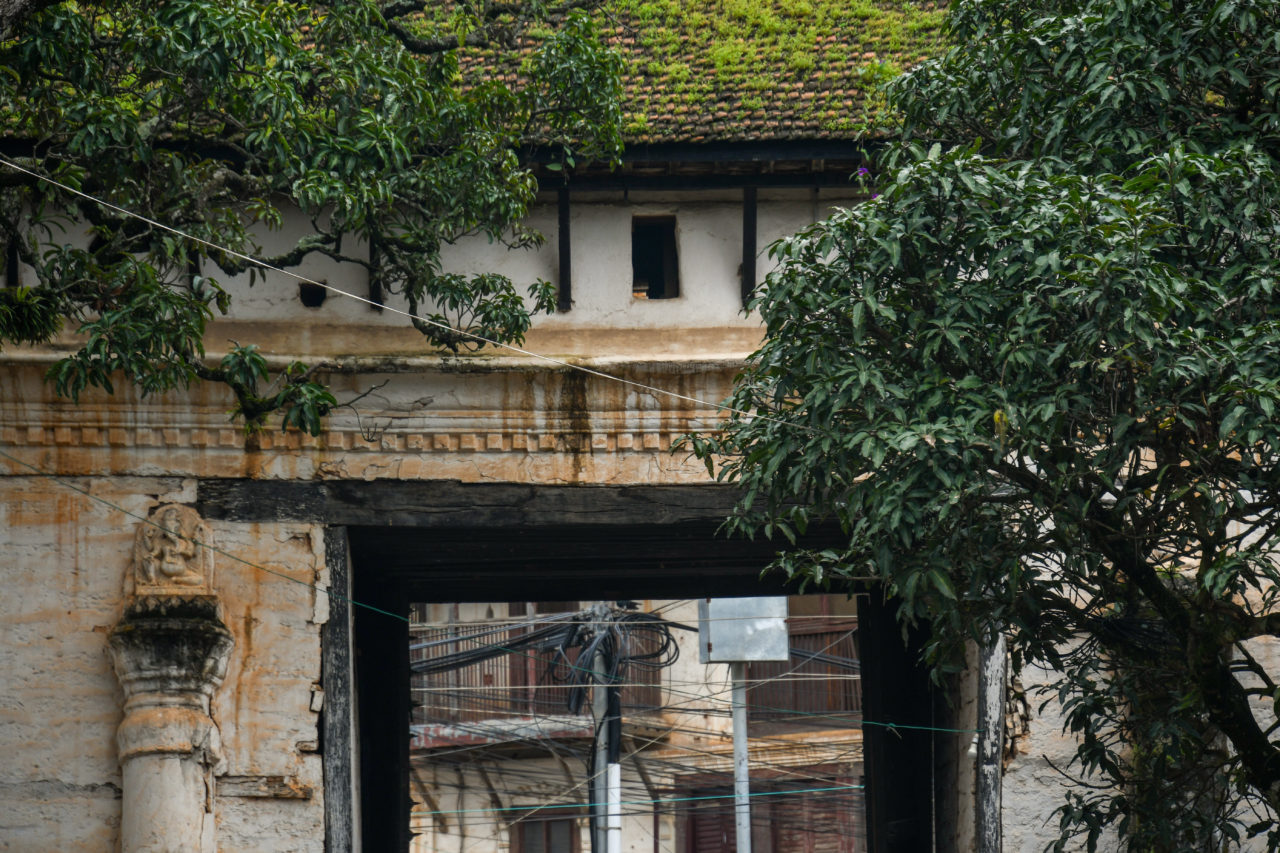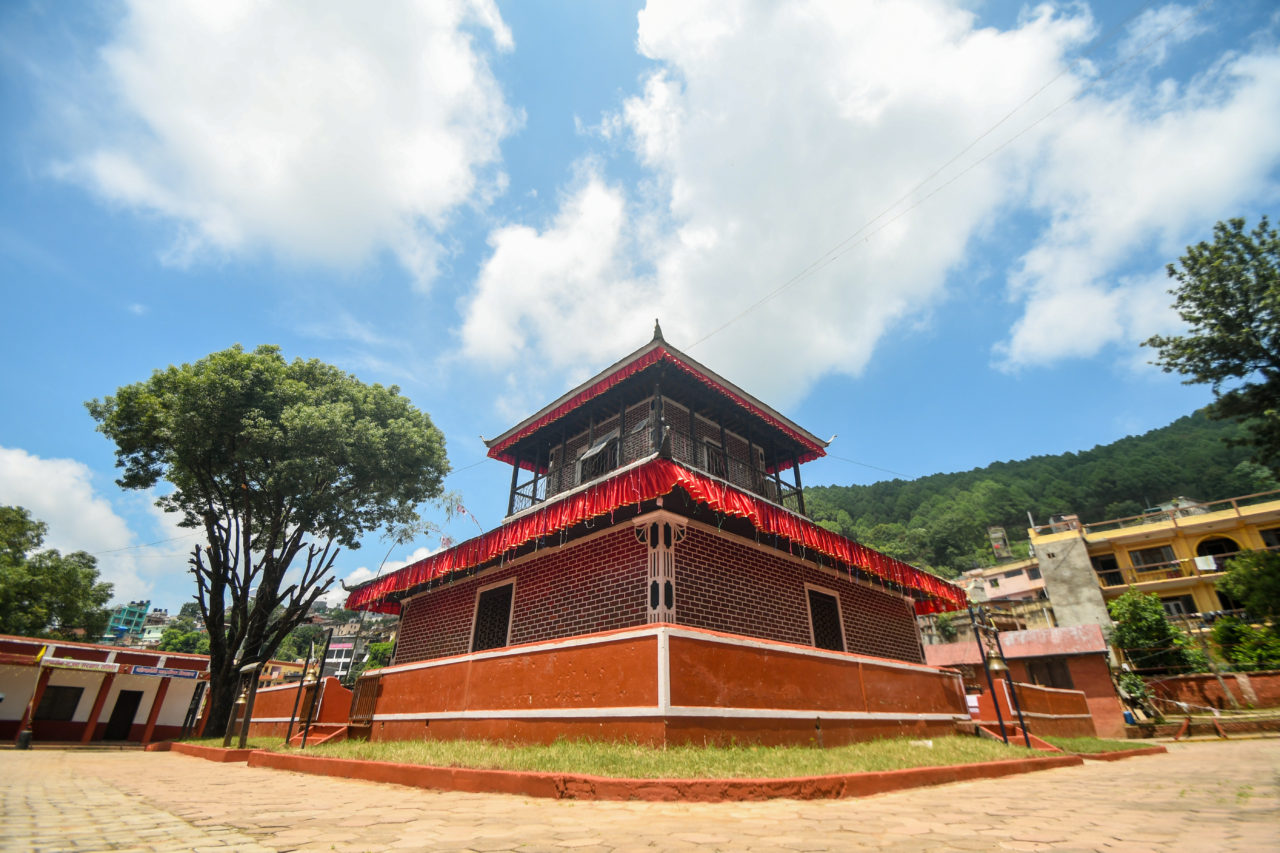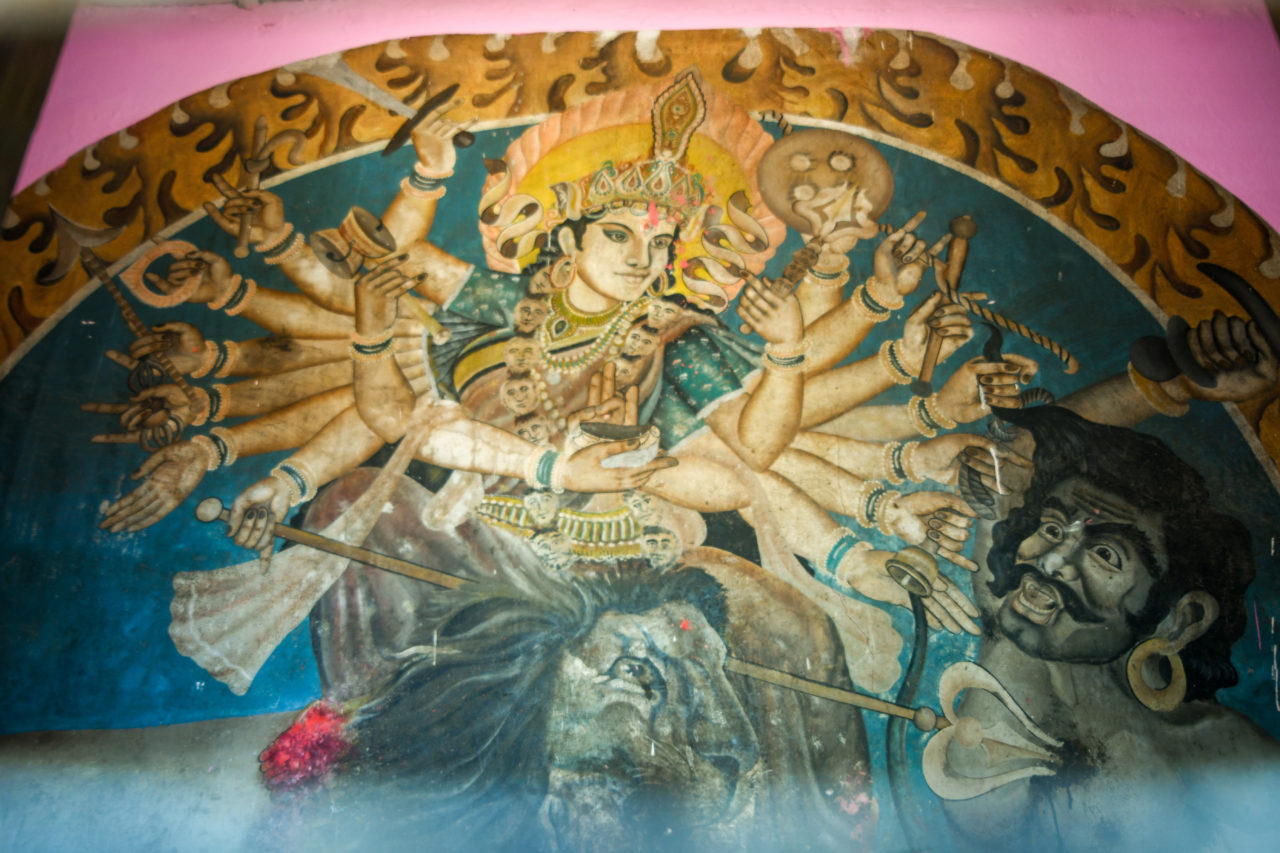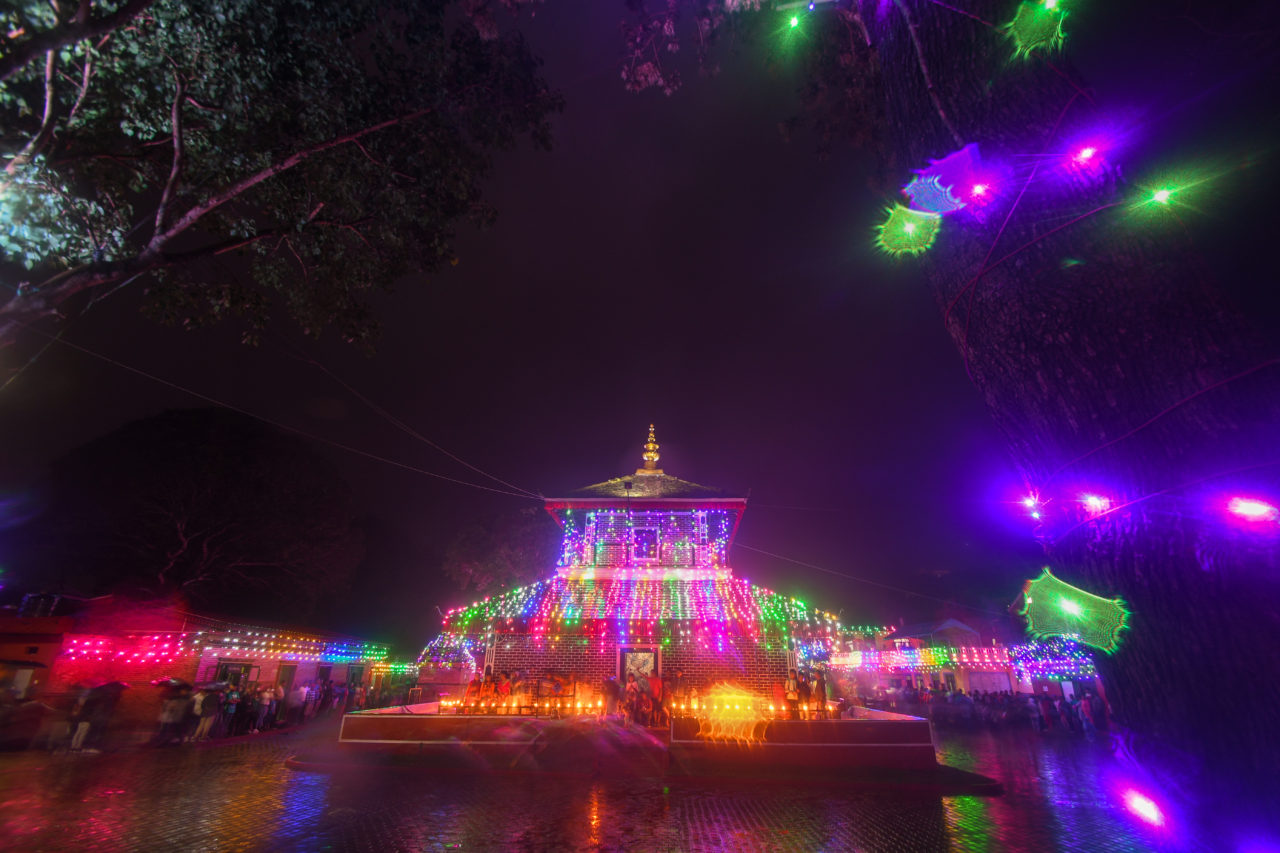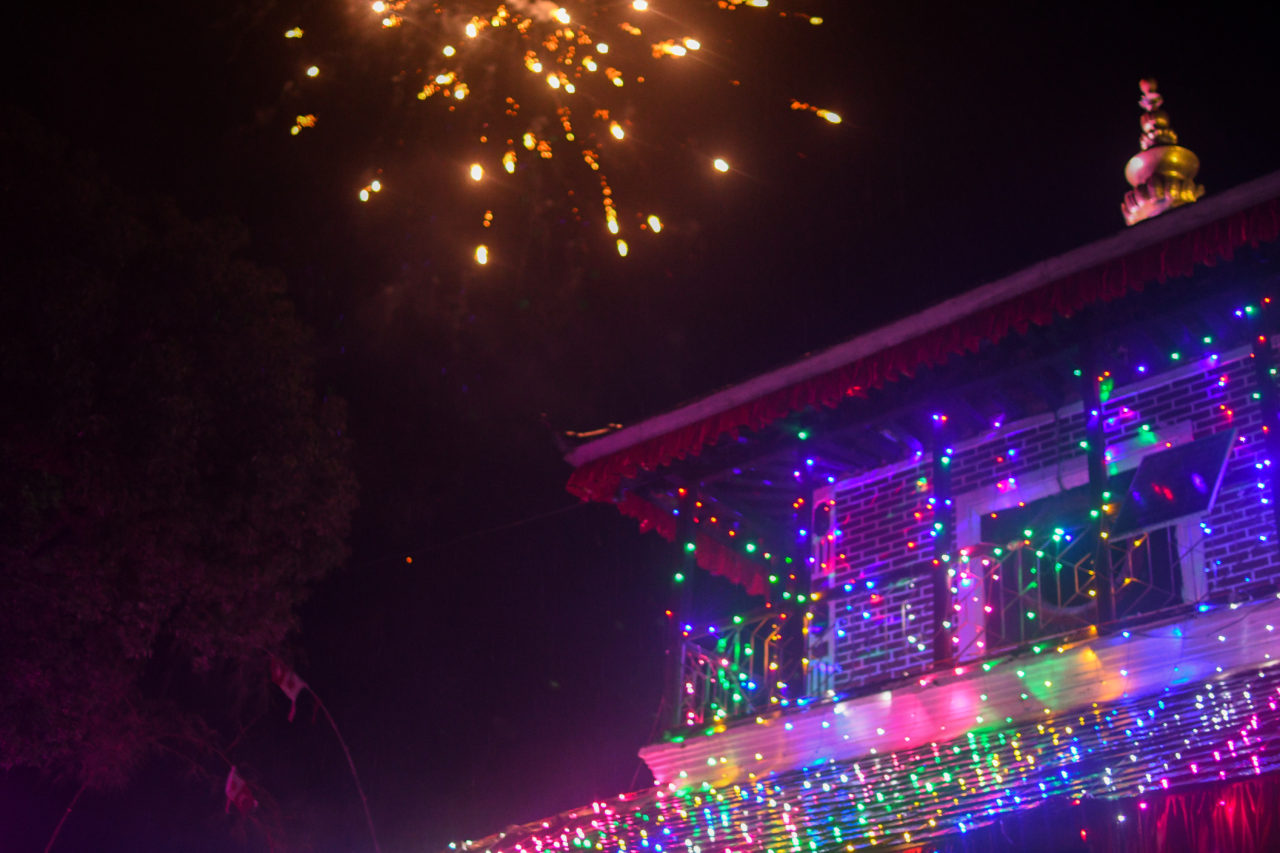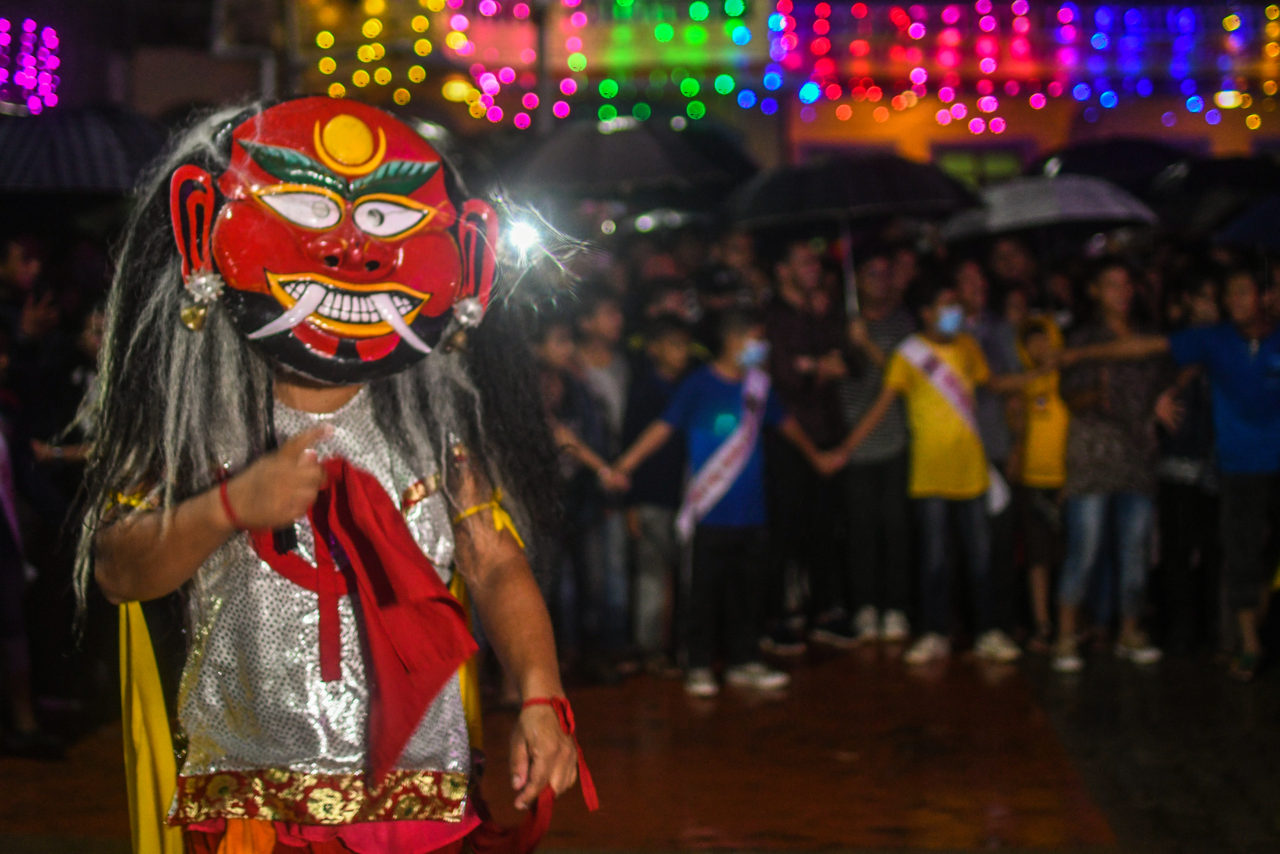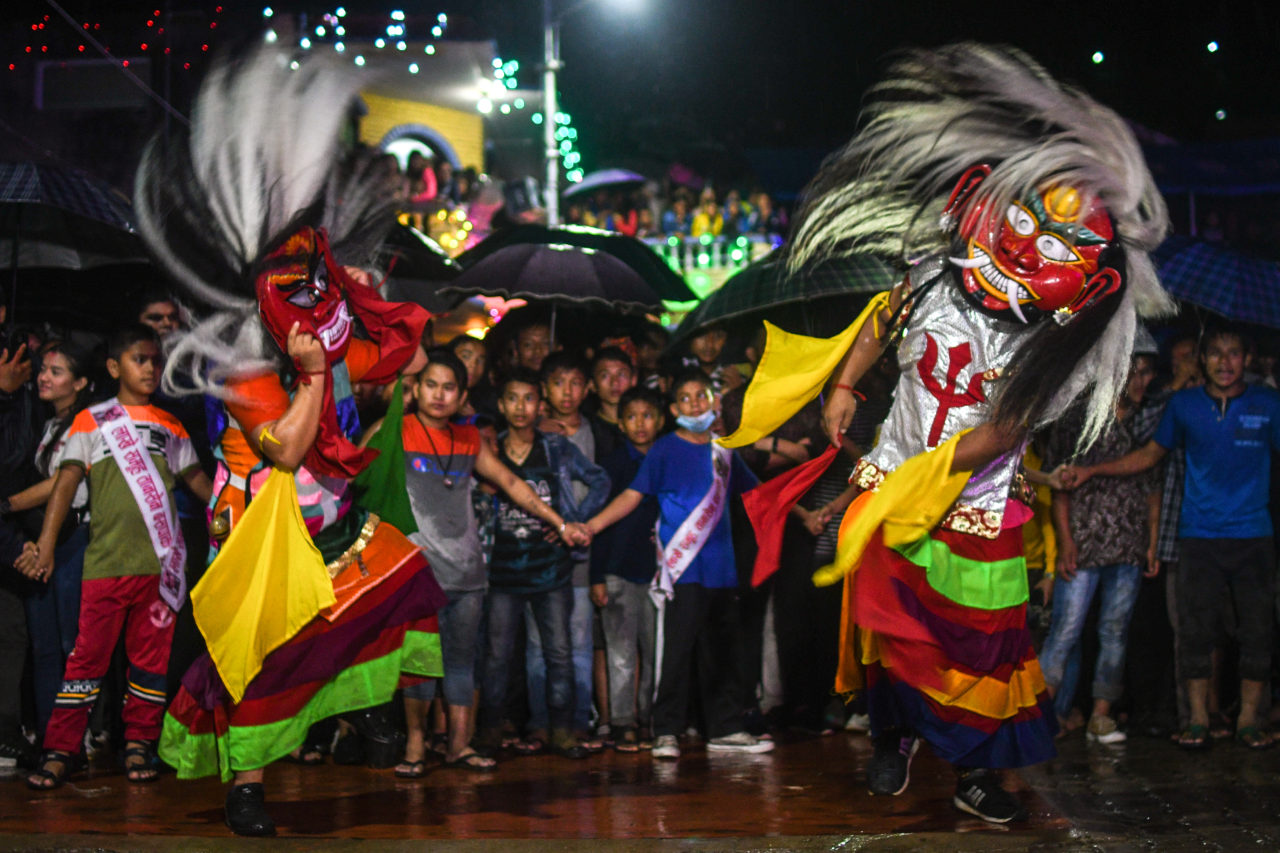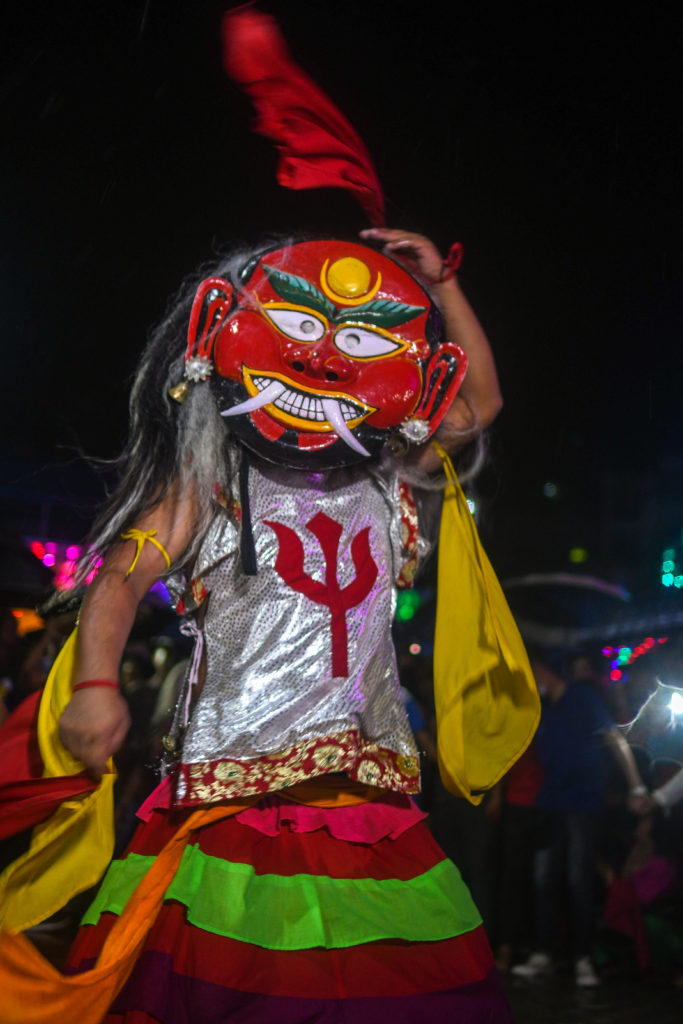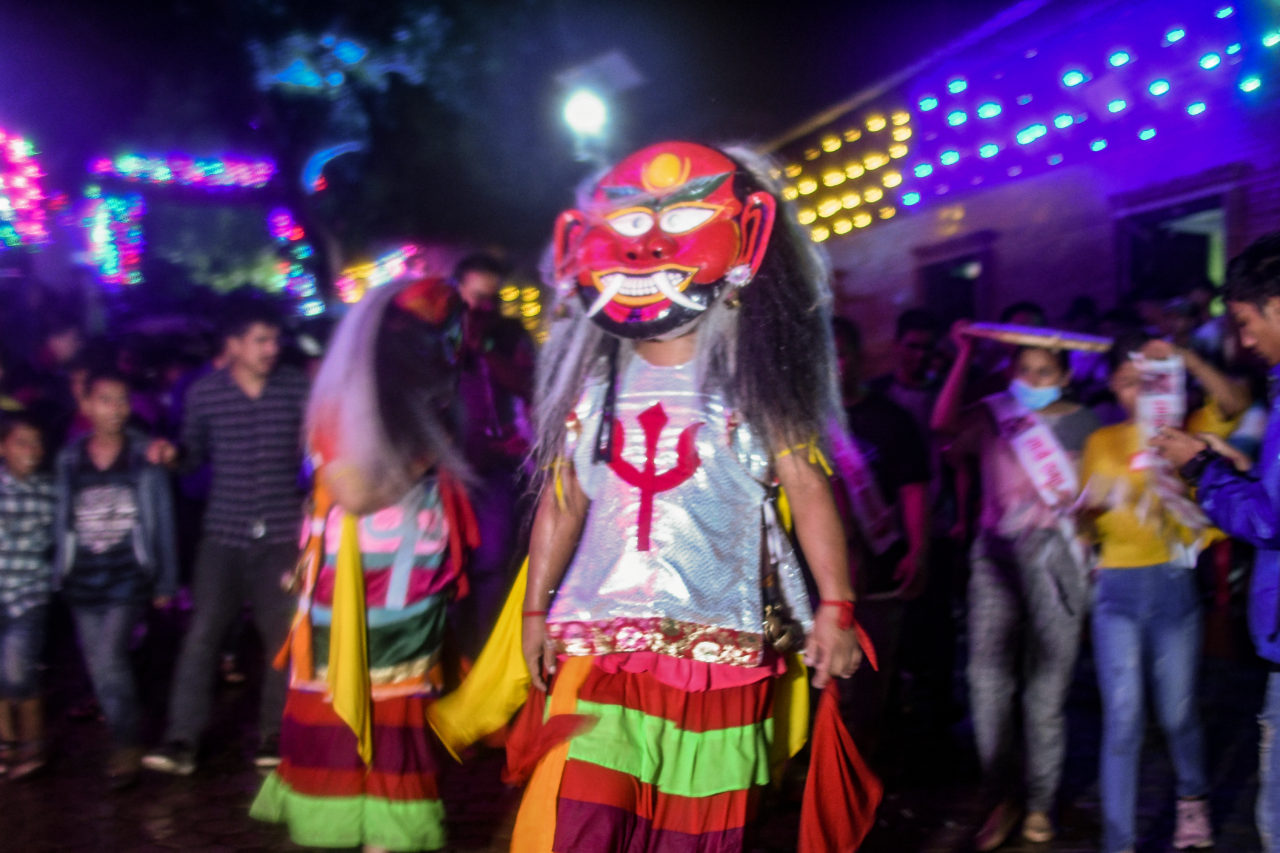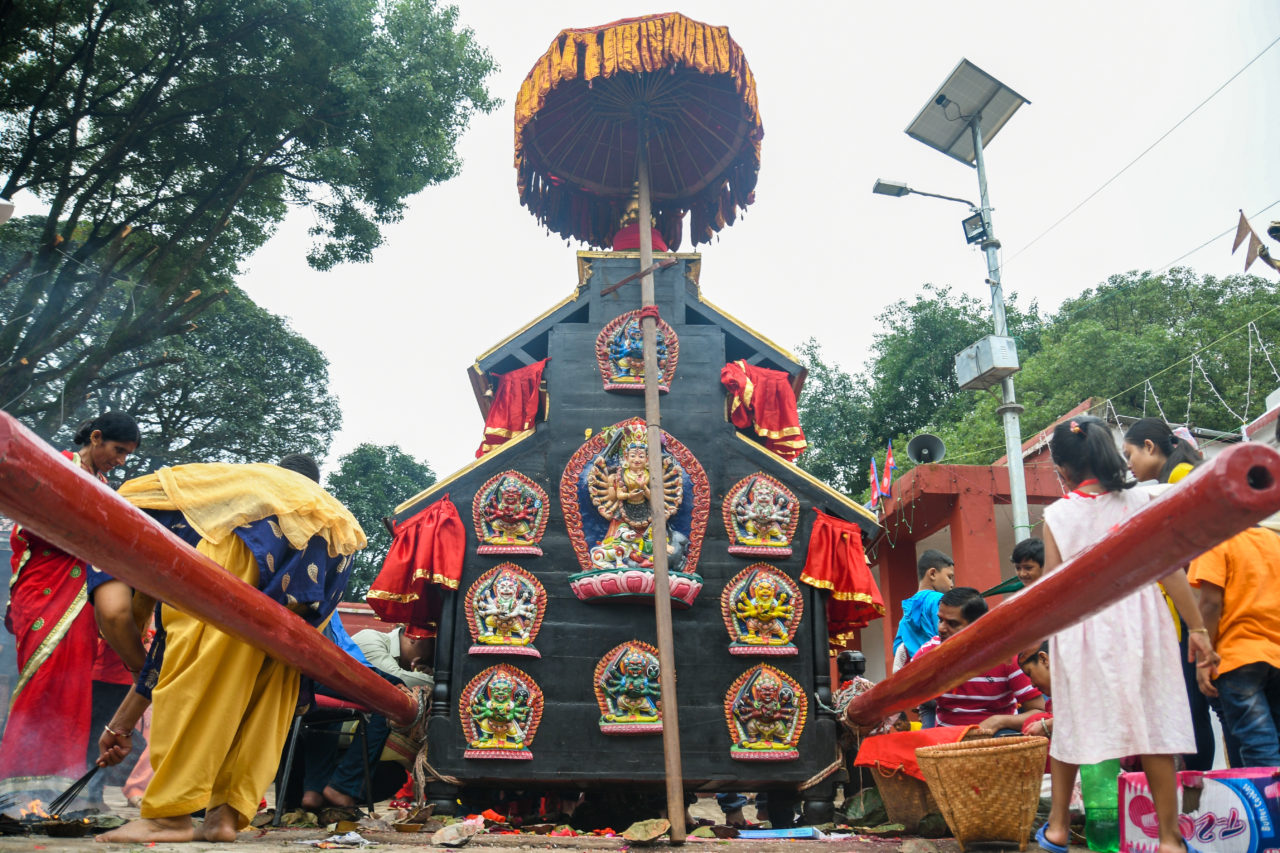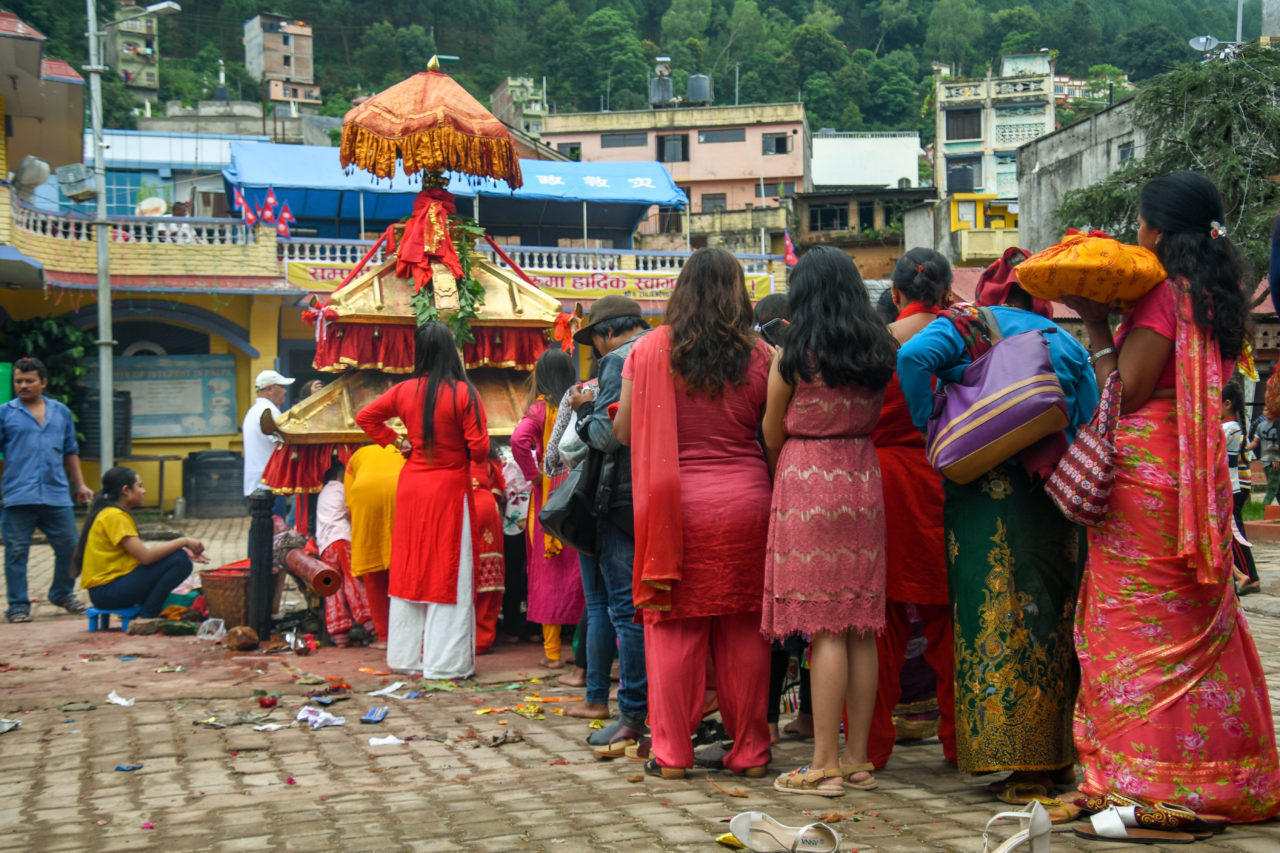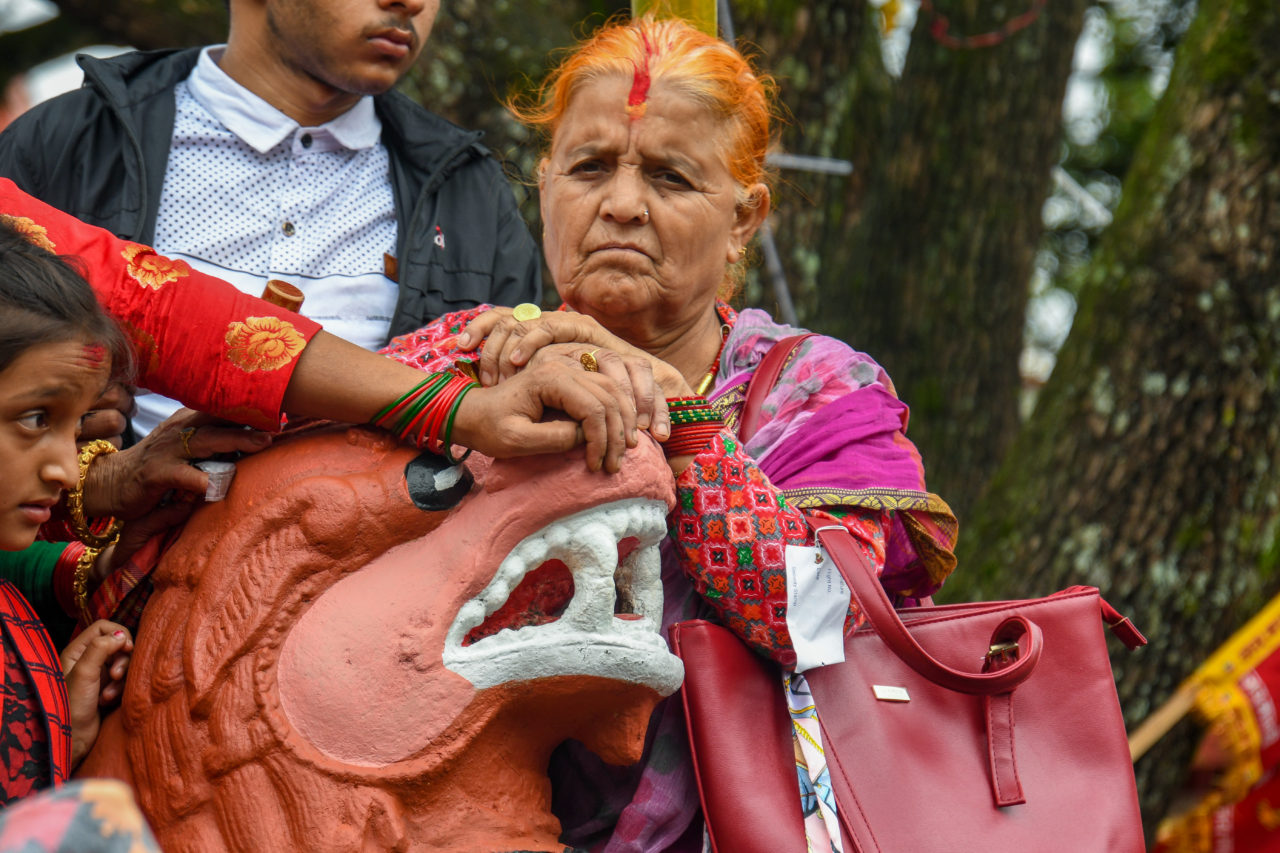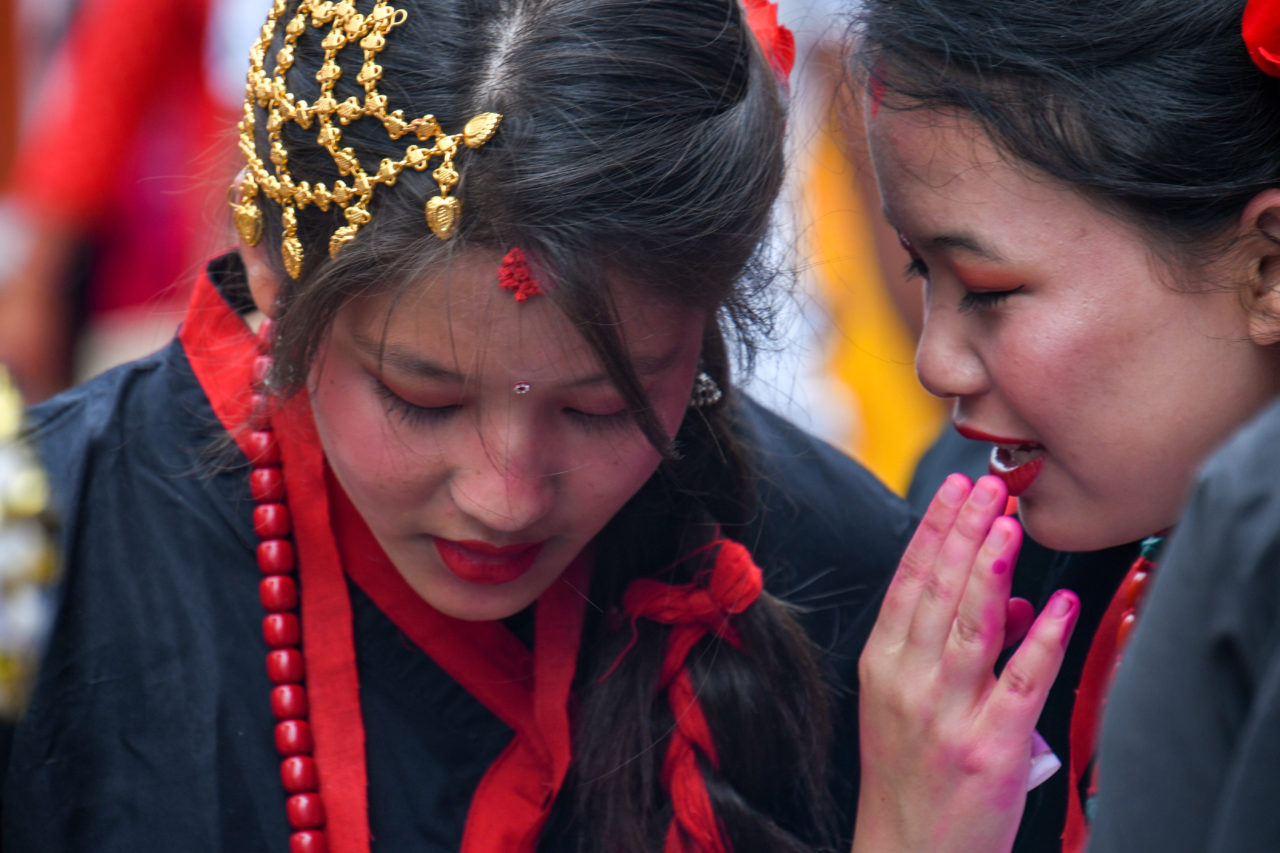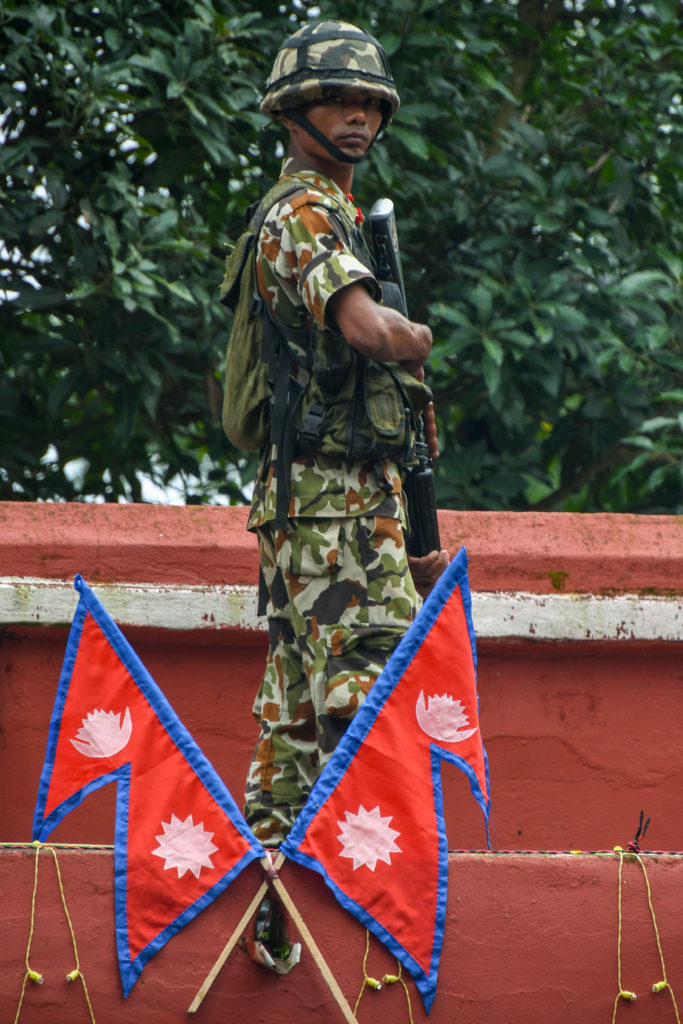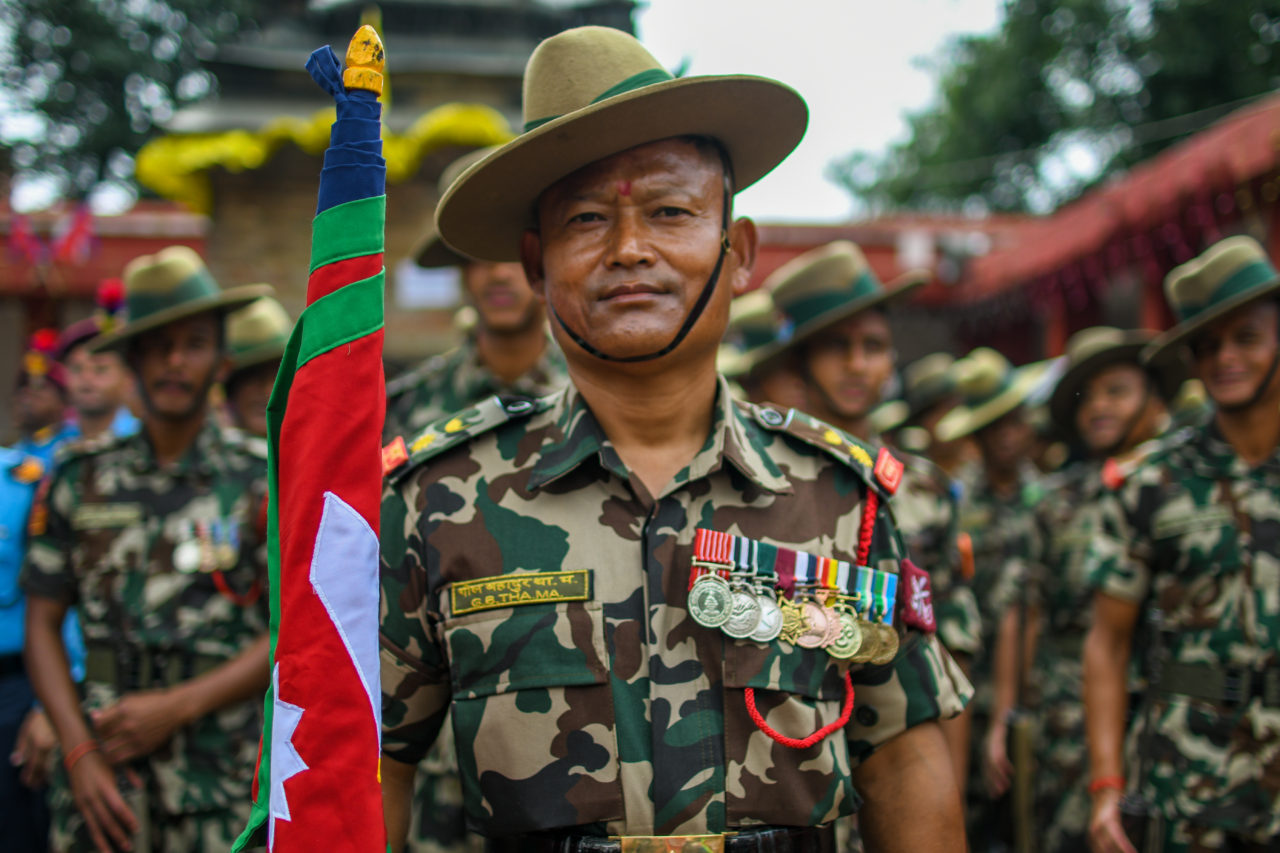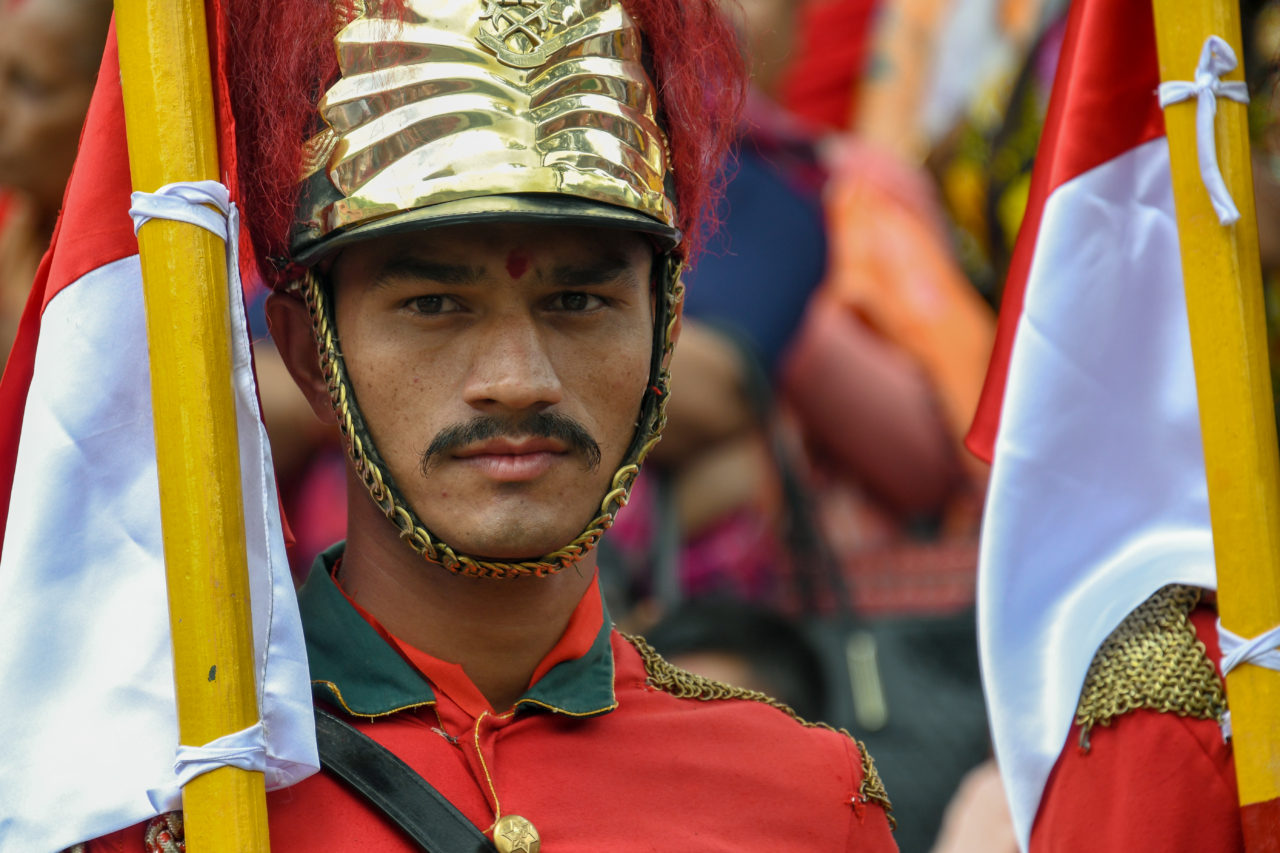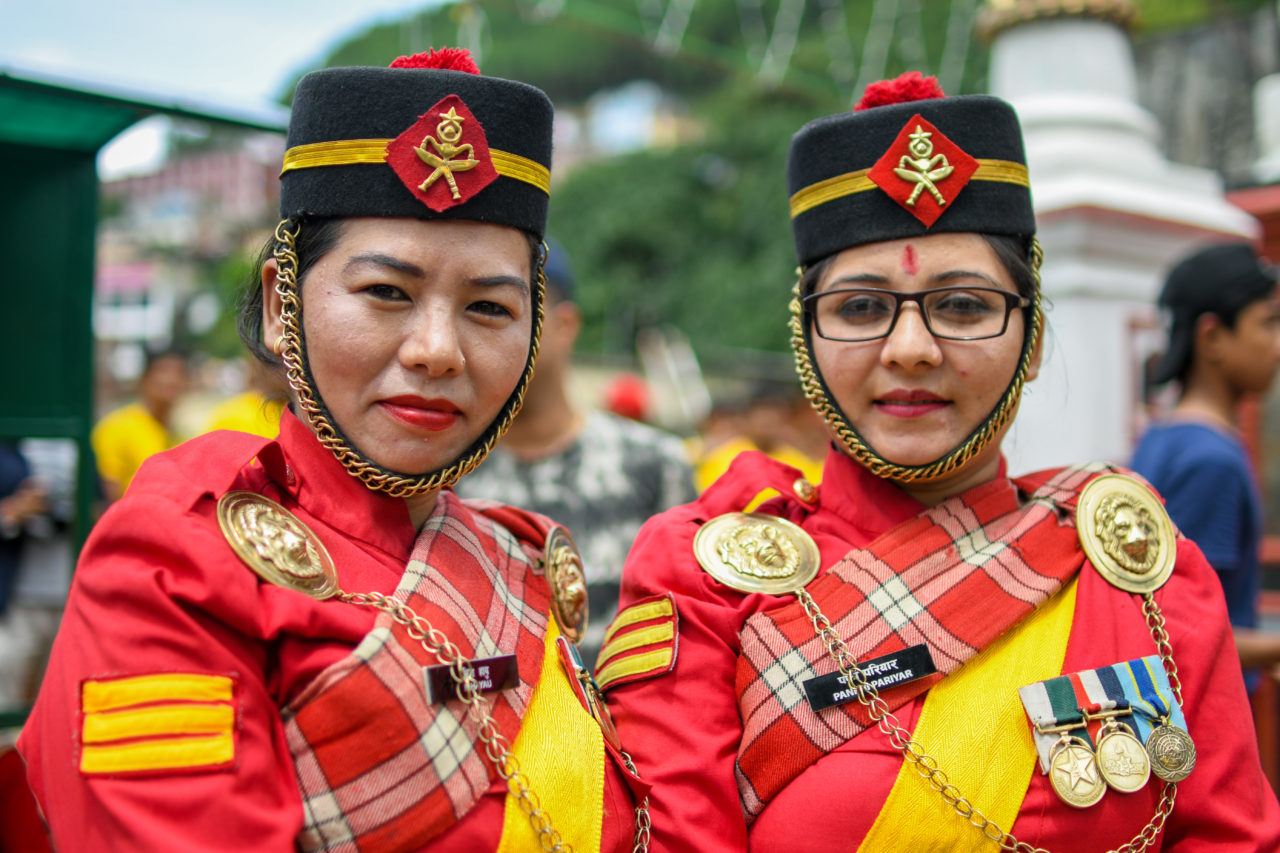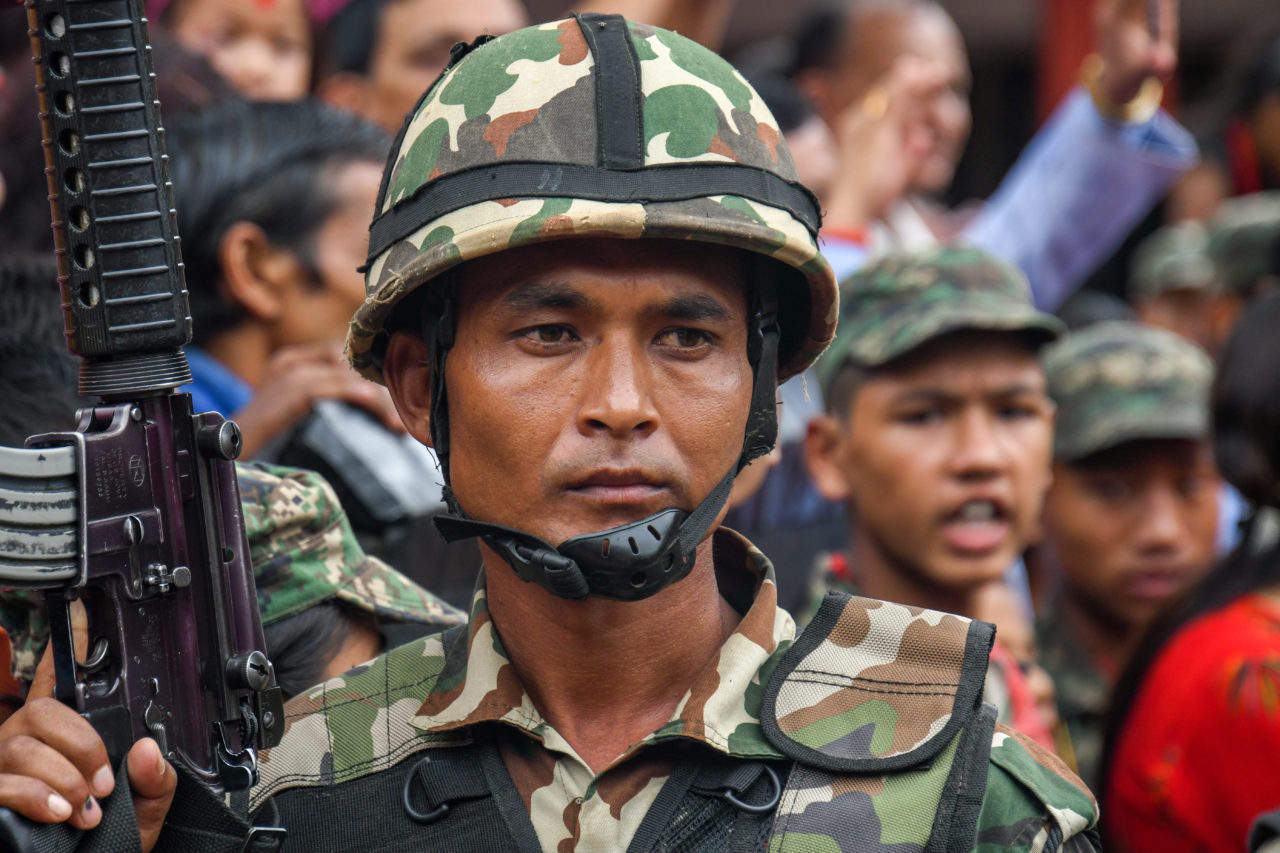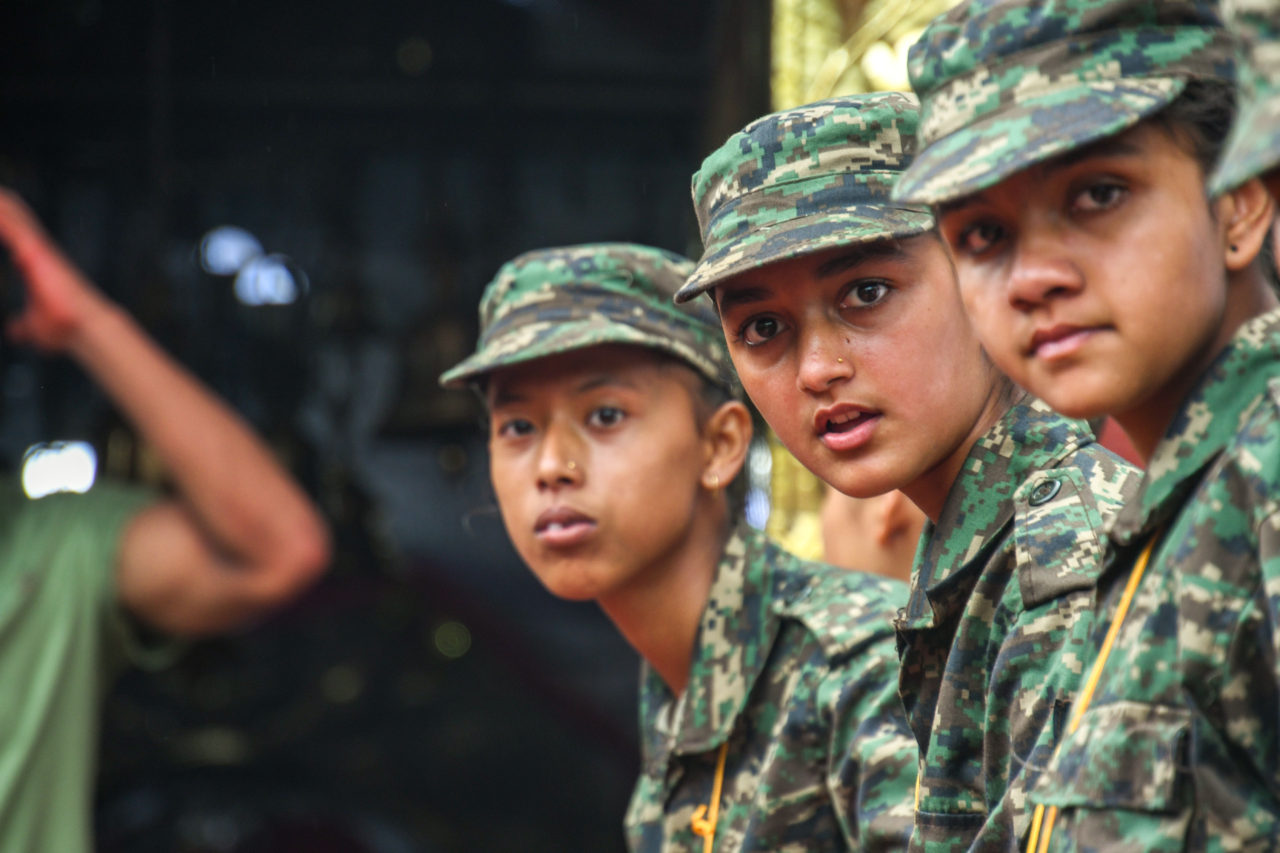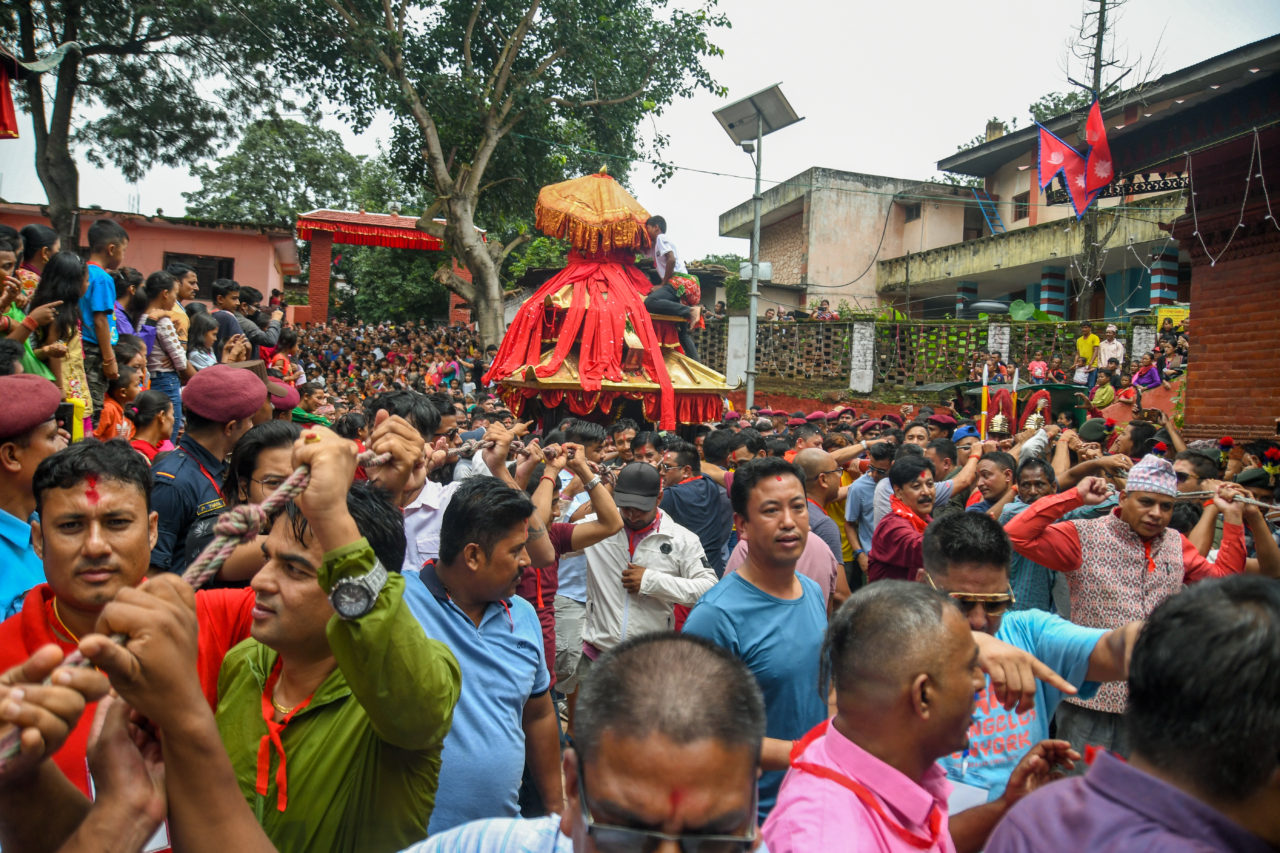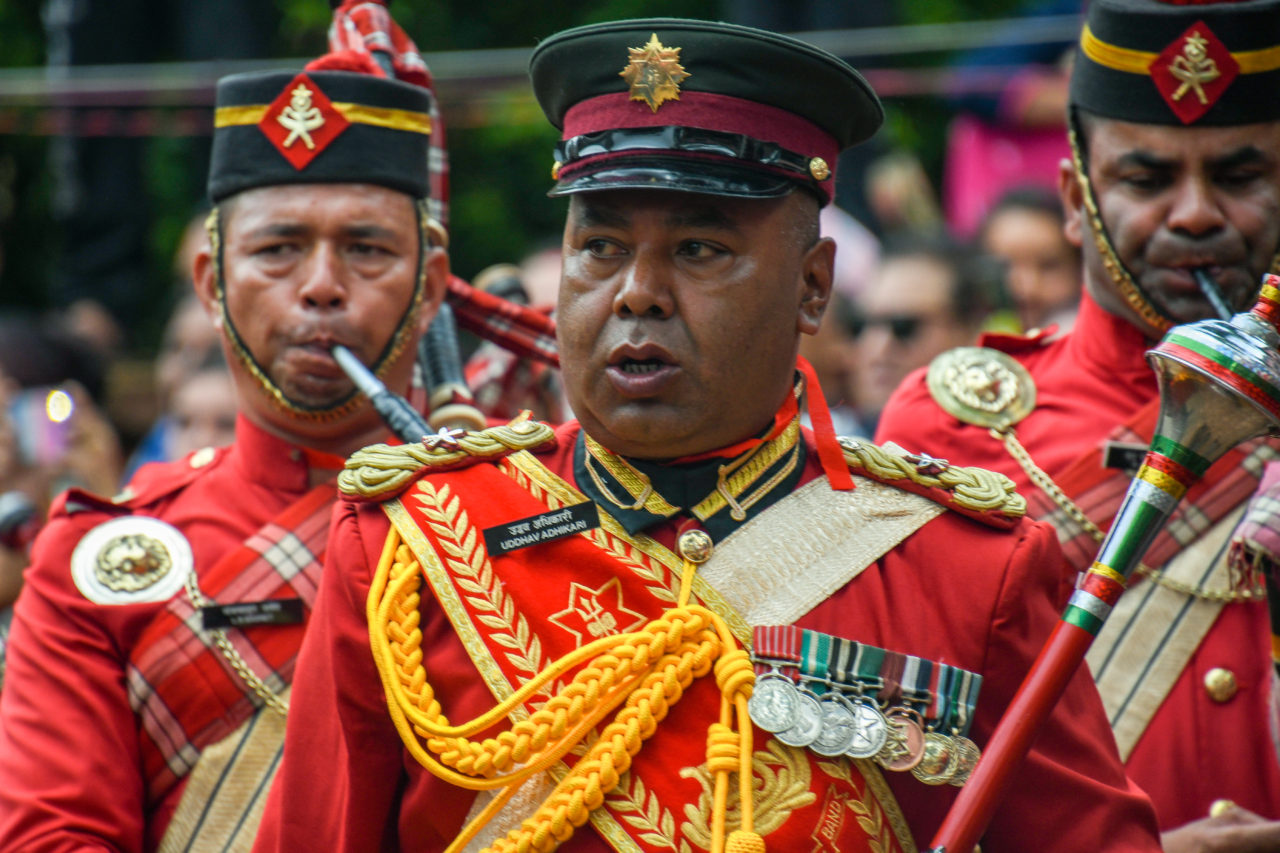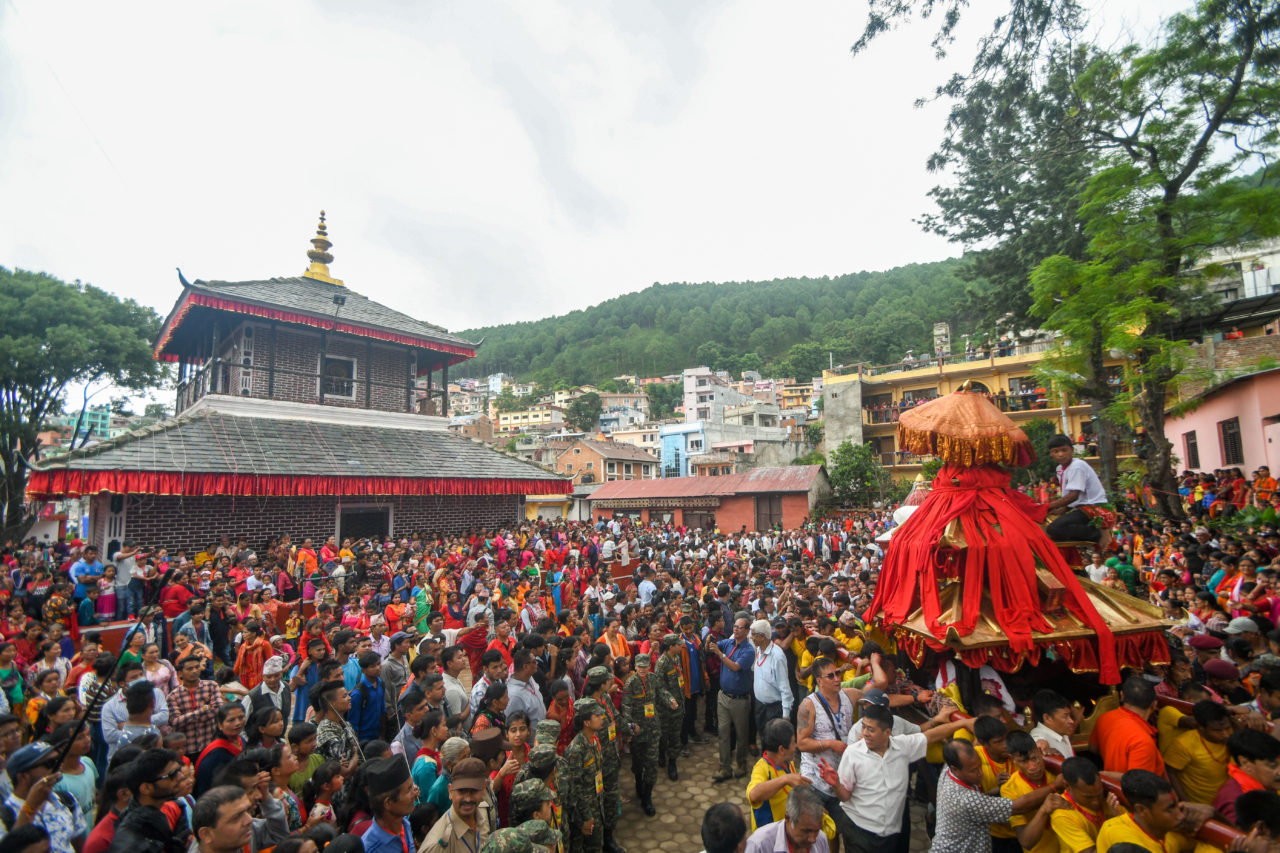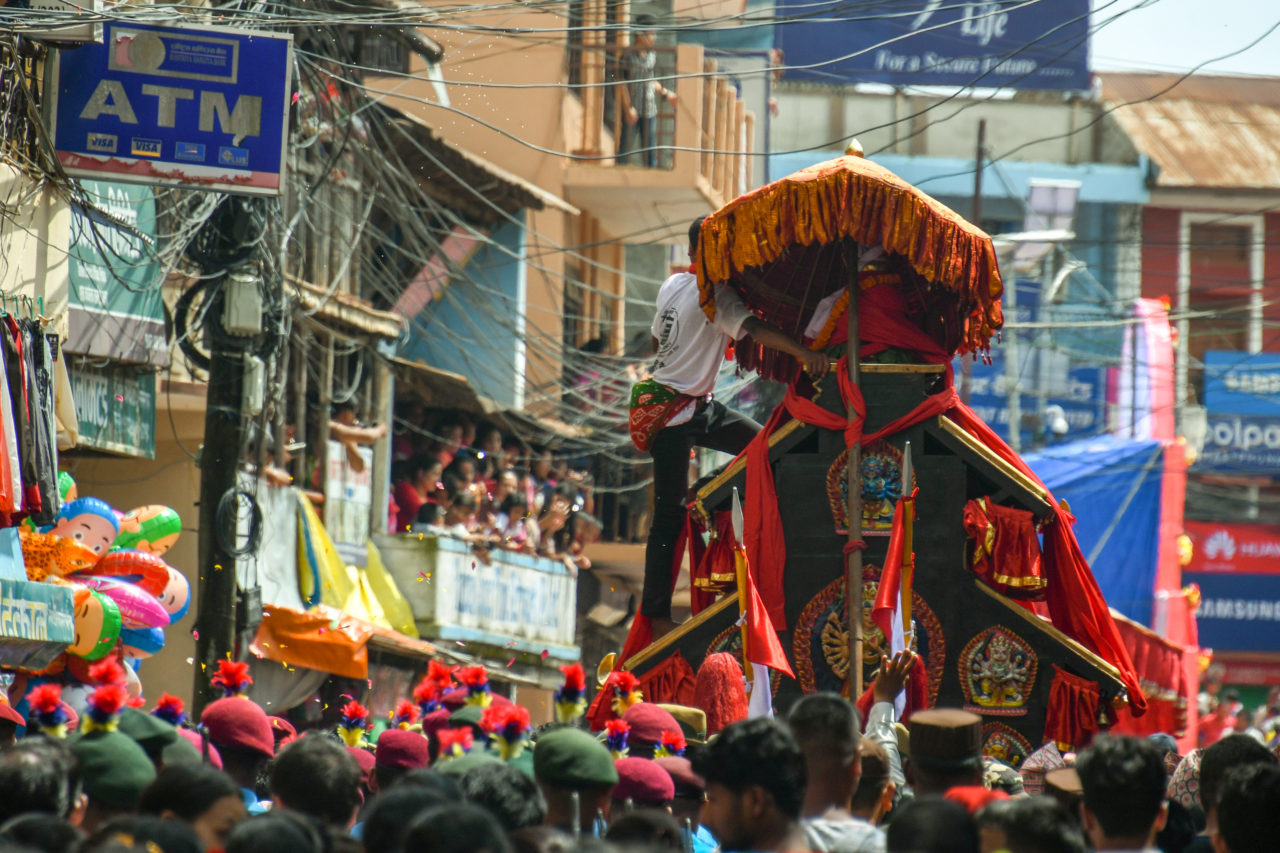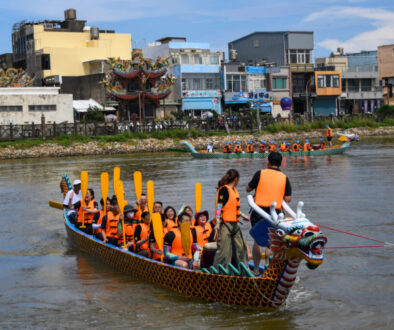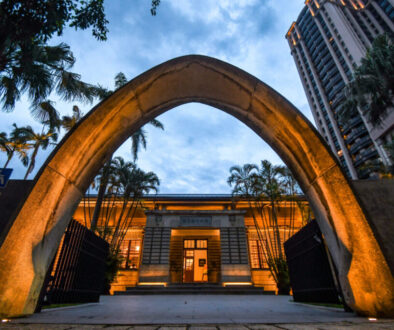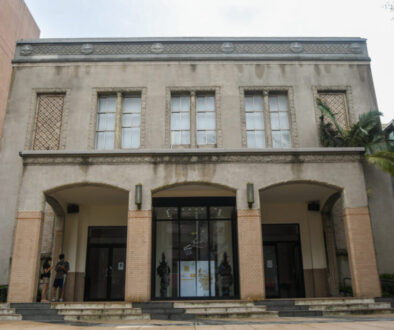The Bhagwati Jatra of Tansen Palpa
Traveling to Tansen, Palpa
Located on a misty mountain top in Palpa, Tansen is a city which is often overlooked by most travelers in Nepal. Many buses fly right by the historic capital of the ancient Magar kingdom. Being too busy on their way to either the Indian border or the tourist enclave of Pokhara. Unknown to many, Tansen offers just as much traditional architecture and cultural festivals as its more popular neighbors over in Kathmandu Valley.
When touring the steep narrow streets of Tansen, you are sure to come across many unique shrines and massive temples. Not one temple in Tansen can quite hold a light to the ornate beauty of the Amar Narayan Mandir. Although the Amar Narayan Temple is by far the most detailed pagoda in Tansen, it is not the most famous. This title is awarded to the Bhagwati Temple.
You can find a complete guide on traveling to Tansen here!
Tansen’s Bhagwati Temple
This rather large complex is home to a small, box-like temple. Complete with tacky painted lines of brick onto the concrete. For the unaware tourist, the Bhagwati Temple would be nothing more than a footnote of all the things that made their trip to Tansen.
Goddess Bhagwati (also known as Durga) is considered the mother goddess in the Hindu pantheon. The deity who all other goddesses draw their power from. As a warrior goddess, Bhagwati is often depicted as riding a tiger, having many arms carrying various weapons, and slaying the buffalo demon Mahishasura.
The true intensity and importance of this temple can not be felt on just any day in Tansen. To truly witness why the Bhagwati temple is regarded as the most sacred in all of Tansen, you will have to arrive during the holiday: Krishna Janmashtami.
If you find yourself in Panauti you won’t want to miss the Aarti Puja at the Brahmani Temple!
The Night of Krishna Janmashtami
Krishna Janmashtami is a holiday celebrated throughout the Hindu world. From Sri Lanka to Nepal, devotees mark the birth of Lord Krishna by fasting during the day and dancing at midnight. In Tansen, Krishna Janmashtami is also a major holiday where local shrines see lines of Hindus looking to pray to Krishna and place offerings. But the real holiday on everyone’s lips is the Bhagwati Jatra.
In late August or early September, Krishna Janmashtami is observed throughout the world. But Tansen also has its own local holiday which overshadows all the festivities which mark the birth of Krishna. After praying to Lord Krishna, many locals can be seen rushing to the Bhagwati Temple. What was a simple, unassuming temple during the day, is transformed into a colorful world lit by neon lights at night.
During this festival, it is plain to see why the courtyard surrounding the Bhagwati Temple is so large. Once a year, the temple grounds need to accommodate half the city of Tansen. While the devotees wait for the clock to strike midnight, bands make their way to the Bhagwati Temple to bring in the holiday with drums and horns while teenagers pass the time by downing bottles of alcohol.
Nepal isn’t just made up of Hindus, read about celebrating Eid in Nepal here!
The Arrival of a Demon
Throughout the night, the second you hear the crash of a cymbal, you can hear a murmur of the word “lakhe” amongst the crowd. When the clock strikes 12, midnight marks both the birth of Lord Krishna and the start of the following day’s Bhagwati Jatra. Many Hindus, however, are just waiting to catch a glimpse of the famous demon known as the lakhe.
In Newar culture, the lakhe (or Majipa Lakhe) is a demon who emerged from the woods to protect villagers from other evil creatures. According to Newar folklore, the demon wished to live in the city amongst the people. The king was skeptical, wondering what would the beast eat if it did not feast on the flesh of man. The demon reassured the king that he would only eat meat and eggs. The name “lakhe” was thus formed from the Newar word “la” meaning meat and “khey” meaning eggs.
Looking for something different to do in Pokhara? Be sure to visit the Matepani Monastery!
The Lakhe Dance at Midnight
This ferocious beast is most common during the Indra Jatra, but can also be found during any other traditional Newar festival. Many other communities try to imitate the lakhe dance for their own holidays. But no ethnic group can quite match the intensity and drama put into the Newar’s performance.
As the time grew closer to midnight, the crowds that mustered around the Bhagwati Temple became restless. As soon as the demonic deities made their presence known, the masses encircled the lakhe as they performed their traditional dance. Accompanied by the teaser demon known as the Jhyalincha, the lakhe charged into the crowd and pranced in front of the Bhagwati Temple in tune with the clashing of cymbals.
If you like Tansen, you are sure to love the small Newar village of Panauti!
Placing Offerings on the Khat
The morning starts slow after the vibrant and exhilarating lakhe dance the night before. Many youngsters are still trying to shake off their hangovers, while other Hindus are just recovering from a night of music and worship. A small line of people in front of Bhagwati’s palanquin (known in Nepali as a khat) are the only souls to be seen. The group of women quietly place offerings before the goddess and receive prasad after the food has been blessed.
The only sound that can be heard is the squawking of a chicken and the thud as it’s head rolls on to the stone courtyard. The giving of offerings (prasad) in the form of rice, milk, and even blood is common in Newar culture. The lines of Hindus looking to pay their respects to a local god or goddess is usually the calm before the storm. At 11:00 am, the Bhagwati Temple will have wall to wall people looking to witness the carrying of the khat throughout Tansen’s streets.
Wanting to read more about traditional Newar festivals? You won’t want to miss the Bisket Jatra!
The Crowds of Tansen
The crowds began to swell in the courtyard around the unassuming Bhagwati Temple. Even the madness of the night before is nowhere near as crazy as the number of people who came pouring into the temple grounds.
Among the hoards of people were bands from different ethnic communities, all dressed in their traditional garb. From each corner of the complex music could be heard echoing off the walls of the Bhagwati Temple. Each group of musicians formed a ring around those who wished to celebrate the festival in the form of lively dances.
These groups of performers representing different castes, schools, and villages all awaited for Bhagwati to be hoisted on to the shoulders of devotees so they could lead the goddess through the city of Tansen.
Want to read about more traditional festivals in Nepal? Check out Janai Purnima here!
What is the Bhagwati Jatra?
This festival, which literally lights up Tansen every year, has much more to it than just worshiping the goddess Bhagwati. During the Anglo-Nepali War from 1814-1816, Butwal – Palpa was one of the many fronts the war was fought.
On his way to confront the British at Jitgadhi Killa, Colonel Ujir Singh Thapa stopped at the Bhagwati Temple in Tansen. After kissing the feet of the goddess, he vowed that if he was victorious in battle he would build a grand temple on this site and worship the goddess every year in the form of a massive Sindur Jatra (Victory Parade).
As fate would have it, Colonel Thapa soundly defeated the British army and kept his word to erect a three-story pagoda for the Bhagwati Goddesses. For over 200 years, the people over Palpa have joined together in the heart of Tansen to not only mark the victory of Nepalese forces but also honor all those who serve in the military.
If you are wanting to hike to the World Peace Pagoda in Pokhara you can read my full guide here!
Nepal’s Scottish Guard
It was not only the locals of Tansen and different ethnic communities who made up the crowd in front of the Bhagwati Temple in Tansen. Many divisions of Nepal’s armed forces could be found standing at attention in the courtyard in front of the pagoda.
The local police and army formed their rows and waited for the beginning of the parade, but what will truly grab your attention is the regiment of Nepali soldiers dressed up in the traditional uniform of the Scottish Guard. Being a holiday which commemorates the defeat of the British, it is a bit baffling on why local Nepalis would want to dress up as their enemy.
Despite the rather contradictory nature of these plaid red-clad soldiers celebrating the defeat of the British, the bagpipes fit right in with the rest of the traditional Nepali instruments that can be heard blaring throughout the temple.
Another popular festival you won’t want to miss is Nepal’s Ropai Jatra also known as the rice planting festival!
Armed Forces Day
While there were many regiments who massed outside the Bhagwati Temple just for show, there were still tons of armed guards keeping a watchful eye from the surrounding rooftops. Guns cocked and at the ready, the soldiers came armed to the teeth in preparation for the arrival of one of Nepal’s own generals.
It wasn’t just the military that helped control the crowd as the general walked the steps up to the temple to pray before the goddess Bhagwati. Tansen also enlisted the help of local students who were part of the “Cadets Club” to form a human chain in order to control the restless mass of people pushing to reach the temple.
Planning on hiking to Namo Buddha? You can find my complete guide on how to get there from Panauti here!
Lifting Up the Bhagwati Goddess
After hours of waiting around the temple and being packed into the courtyard like a can of sardines, you may begin to wonder if this festival will ever start at all. With endless pushing of elderly women trying to reach the front of the temple despite the presence of armed guards and the overwhelming stench of human sweat, Closter phobia will begin to set in even for the most tolerant of people.
At the last moment when you can bearly stand the constant elbowing and shoving, a small cheer will turn into a roar from the crowd. After all the hours of waiting, the goddesses’ khat has been lifted on the shoulders of the devotees and began its parade around the temple. Led by the regiment of bagpipes, groups of traditional Nepali musicians, and neat rows of police, the parade circled the temple several times before plowing through the sea of people and making its way to the streets of Tansen.
Another one of the most famous temples in the region is across the border in Syangja! Check out Chhangchhangdi Temple here!
Taking to the Streets
After finally breaking through the sea of people, the khat was led out onto the streets of Tansen. Other than the bands and regiments inside of the Bhagwati Temple, thousands of more musicians and communities awaited the coming of the cart. Only then could they begin their march through the city. Each section of the parade, led by their own banner, played their hearts out for the countless number of onlookers who flooded the streets and hung out the windows.
What may have seemed like a lifetime inside the temple was merely just the beginning of the festivities which mark the Bhagwati Jatra. For hours, the shrine will be carried throughout Tansen, making its way to every corner of the city, before finally making its way back home to the Bhagwati Temple.
Kathmandu and Bhaktapur nearly have a holiday every day of the week. But for the people of Tansen, the Bhagwati Jatra is a festival which can be matched by no other. To feel the indescribable energy and unique culture of Tansen, you will have to go off the beaten track and attend the festivities of the Bhagwati Jatra.

